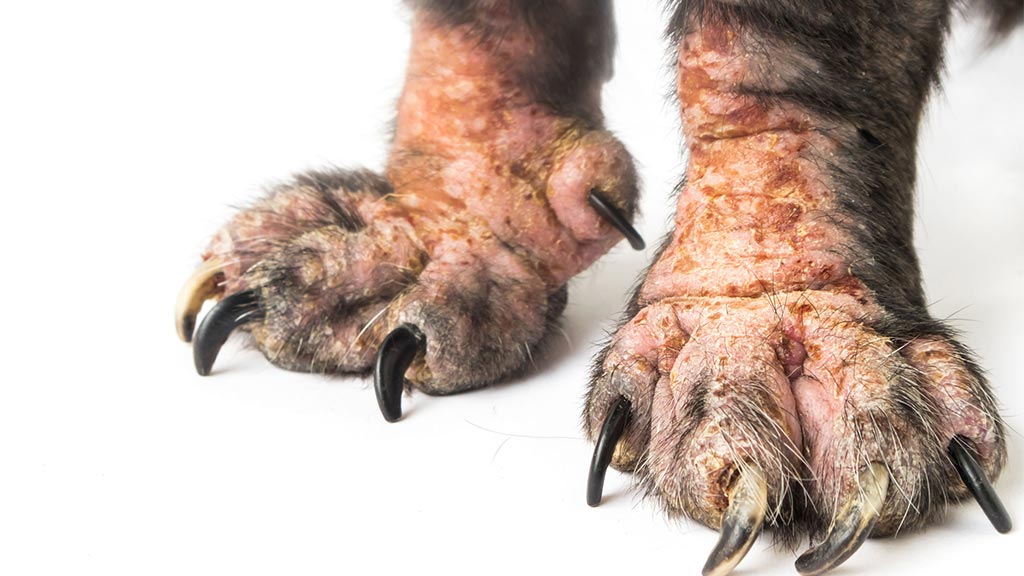
On March 1st, USA Today ran the headline “Popular flea collar linked to almost 1700 pet deaths. The EPA has issued no warning.”
Because so many of our team members and our clients have used, and continue to use, the Seresto collar as a method of flea and tick control for their pets, we wanted to issue a statement of our own to help pet owners make sensible decisions when it comes to flea and tick control.
The Article Appears To Be Factual, But Some Questions Remain
We have reviewed the USA Today article and the aggregate Incident summary report showing that there have been 1698 domestic animal deaths linked to the Seresto collar from 2021 to June of 2020. Everything seems to fact check, but keep in mind that deaths reported to the EPA could include accidental deaths associated with the product. For example, a common cause of serious medical issues related to flea collars is using them on the wrong pet. Are some of the domestic animal deaths reported by the EPA because pet owners put a dog collar on a cat, or because a pet chewed up and swallowed a collar?
Our Own Anecdotal Evidence Is That Seresto Is Safe
We Have Not Seen Any Seresto-related Deaths Or Know Of Any Deaths
We have not seen any deaths related to use of the Seresto flea collar, nor have we heard any news of any Seresto-related deaths from any of our other colleagues in veterinary medicine. We do not know of any studies directly linking Seresto to death or to other reactions that would be outside those that might occur in any study of any topical flea medication.
We Have Not Seen Skin Issues With The Product
We have not seen any serious dermatological conditions related to the Seresto collar in the patients that we treat. We have not had any complaints about the product from any of our clients that use the product on their pets.
Our Vets and Support Staff Pets Have Had No Reaction To The Product
Many of our staff members, including our veterinarians, have used the product on our own pets. None of our pets have experienced any reaction.

Veterinary Medical Director Particularly P.O’d by Reporting
Dr. Gittleman, Chief Medical Director of Animal Medical, was particularly incensed with what he believes was sensationalized reporting by USA Today about the Seresto Collar. Said Gittelman,
“I think we are giving the article too much credit for plausible causation. As a veterinarian and scientist, I believe it’s my duty to instruct pet owners to ask more questions rather than assume a nefarious bad actor is trying to kill pets while EPA is in the pockets of big pharma.
“The fact is that 5-million Seresto collars have been sold since 2012 with 1700 reported side effects ranging from topical irritation to death. The only legitimate side effects, other than topical irritation, have been trembling, ataxia and vomiting which were seen when patients ingested the collars. Side effects of a toxin fall inside a narrow spectrum of signs; they are not bizarrely unrelated clinical signs such as ruptured ear drums, kidney, heart and liver failure. Moreover, the article does not site any expert opinions from veterinary toxicologist or results of post mortem evaluations.
“We have been through journalistic scare situations in the past where blame is cast and taken for fact before any true investigative process is initiated: Fabreeze, Swiffer, Trifexis, Rimadyl, all of which were debunked. I do believe the reports have been made, but the devil is in the details. Without all the fact, these reports are only half truths. I agree that we need transparency and pet owners should be aware of these reports but casual is not causal. At the end of the day, pet owners need to make decisions based on informed consent. The only completely safe chemical is no chemical and if that is the choice we make then we live with the risks of flea and tick infestations and the debilitating infectious diseases that come with them.”
Reactions To Preventatives Are Rare, But Usually Fall Into Four Areas
There is some risk with all topical parasiticides, but on the whole, we see very few cases of significant reactions. It would be unusual for us to see more than 1 case per year of an animal reacting adversely to a veterinarian-approved flea product.
In the very few times we see adverse reactions to a flea and tick preventative at our practice, they usually fall into one of four categories:
Paresthesia
Seen in some cases of topical parasiticides, the pet experiences a tingling or burning sensation at the spot where the product was applied. Paresthesia can be alarming for pet owners to witness because the pet will roll on the floor or scratch at the site, trying to itch the site where the preventative was applied.
Dry, red skin or hair loss
Seen in some cases of topical parasiticides, the skin at, and around, the site where the product was applied looks red and/or dry.
Neurological reaction
This is more severe than the paresthesia reaction described above. This almost always occurs when pet owner’s use a dog flea/tick medication on a cat.
Overdose
Pet owners have failed to use the flea/tick product according to manufacturer’s directions or the pet eats a medication that has been manufactured for topical use only.
What you can do
All medications can come with potential, unintended health complications. As a healthcare team, we weigh benefits of therapy against the risks. In the case of flea and tick products, our doctors believe that the benefits of protecting against fleas, ticks and the dangerous diseases that both carry, combined with the prevalence of tick borne disease in our area, far outweigh the very low risk against a skin or neurological reaction to the product.
Still the gravity of the news report is rightfully bound to bring about some concern with all pet parents. In such cases here are some alternatives to year-round use of a Seresto collar or any other flea and tick preventatives that you are concerned about.
Call Animal Medical of New City
As part of our commitment to animal care in our community, Animal Medical of New City provides free 10-minute consultations to pet owners living within 10 miles of the practice. If you have questions, call us, we are here to help. For those of you living outside the 10 mile range, we are happy to provide scheduled, low-cost, 10-minute tele advice calls, during our hours of operation. Call for an appt.
Read The Instructions
Some of the most common adverse reactions occur when a patient is given a preventative that is for a higher weight class than the patient, when the patient is double dosed, or when a cat is given a product intended for a dog. If you have any question about the product that cannot be answered by the medication’s label information, call the manufacturer’s number, usually located on the product’s packaging. Alternatively, you can call the ASPCA Poison Control Hotline
Want A High Quality Product, But Can’t Afford The Cost
Many lower-cost, store brand, flea and tick preventatives are often associated with adverse reactions. We may have an alternative to store-bought flea medication that’s better quality, and still affordable. Additionally, our clients receive rebates and promotions from the manufacturer that lower the final price. You can view our current promotions available through our online pharmacy.
Buy Your Product From A Reputable Source
Counterfeit medications are a real issue. Last year alone, the number of reported counterfeit medication claims jumped by 300%! If you’re seeing a quality flea and tick preventative sold on the internet for much less than you see it sold elsewhere, do your homework, and ensure the product you are purchasing is legitimate.
Try Limited Dosaging
In some cases, it may be all right to test a small amount of a topical product on your pet’s skin before you commit to the entire dose. Call us for guidelines on how you can do this safely.
Limit Your Pet’s Exposure To Fleas and Ticks
All pets in the Northeast, including those that live indoors, are at risk of flea and tick infestation. Still, if you are reluctant to give your pet a flea to tick preventative, use these tips to keep your pets exposure to pet’s low.
- Ticks spend a part of their lives living on the blood of deer and mice. Keep your pet clear of any area where deer and mice are likely to walk. In Rockland County, this can be hard because of the high level of deer we have everywhere: in lawns, woods, and hiking trails.
- If your pet is indoors, make sure that he or she doesn’t come into contact with pets that go outside, or minimally make sure that the outdoor pet wears a preventative.
- Regularly check your pet for fleas. A positive identification for fleas is seeing a flea or flea dirt (the flea’s feces) on the pet.
- Regularly check your pet for ticks by carefully looking through your pet’s fur after visits outside, especially if the pet has been walked off lead or allowed to walk in areas where deer may have been.
Additional Reading
Call 845-638-3600, email or use the form below to reach out to us!









